Ever find yourself standing in the grocery aisle, staring at veggies and wondering, “Does this have seeds?” We’ve all been there.
Seeds or no seeds? That’s the question we’re tackling today.
We’re breaking it down, vegetable by vegetable.
You might recall a summer BBQ where you confidently declared all fruits have seeds. Then someone handed you a bell pepper. Awkward, right?
We’re here to clear the confusion. No more guesswork at potlucks.
Get ready to become a veggie expert.
So let’s get started – let’s uncover precisely what lies beneath the surface of your favorite veggies.
Understanding Vegetable Seeds

Some vegetables that have seeds include cucumbers, tomatoes, peppers, squash, and melons.
These seeds often need special care when planting them to ensure proper growth.
Additionally, knowing the characteristics of each vegetable’s seed can help determine the best time to plant them.
Understanding vegetable seeds is crucial for any home gardener or farming enthusiast looking to grow different types of vegetables successfully.
What Vegetables Have Seeds?
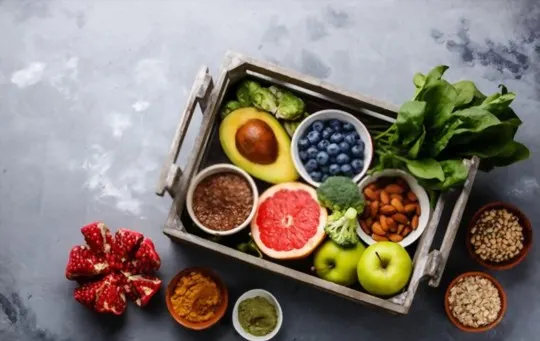
These seeds not only add nutritional value but also provide different flavors and textures to dishes.
Here are some examples of vegetables that have seeds:
- Tomatoes – Tomato seeds are rich in fiber, antioxidants, and vitamins.
- Peppers – Peppers, including bell peppers, jalapenos, and chili peppers, contain edible seeds with a slightly bitter flavor.
- Squash – Squash varieties like zucchini, yellow squash, and pumpkin have large and nutrient-dense seeds.
- Cucumbers – Cucumber seeds contain polyunsaturated fatty acids that can help maintain healthy skin and hair.
- Eggplant – Eggplant has small white seeds that can be eaten but may have a slightly bitter taste.
- Okra – Okra pods have a unique seed structure with mucilage-like substance around the seed itself.
It’s worth noting that these vegetables come in different forms depending on the type or variety.
Some might be more commonly found in fresh form while others may be better suited to processing.
Overall, adding vegetables with seeds to your meals is a great way to up your nutrition game and experiment with new flavors.
1 – Tomatoes
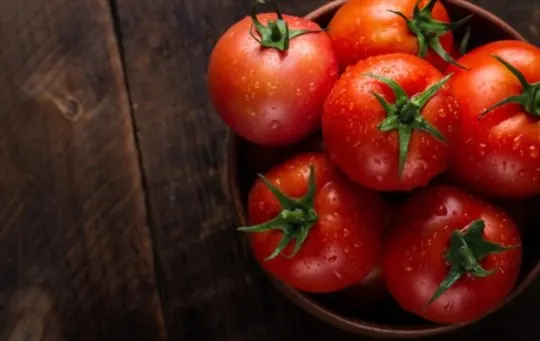
They belong to the nightshade family and are rich in nutrients.
Here are 5 key points about the tomato:
- Tomatoes have seeds located inside them, making them a fruit according to botanical classification.
- There are many different varieties of tomatoes, from cherry to beefsteak, each with a unique flavor profile.
- Tomatoes are rich in vitamins C and K, as well as lycopene – an antioxidant that may help reduce the risk of cancer and heart disease.
- When ripe, tomatoes should feel firm but have some give when gently pressed. Overripe tomatoes may be mushy or have blemishes on their skin.
- Cooking tomatoes may enhance their nutritional value as it makes it easier for your body to absorb lycopene.
It’s worth noting that while tomatoes themselves have seeds, other parts of plants like roots and stems may also contain seeds or produce seed pods.
Understanding which vegetables fall into this category can be helpful for gardeners hoping to grow new plants from scratch.
2 – Cucumbers
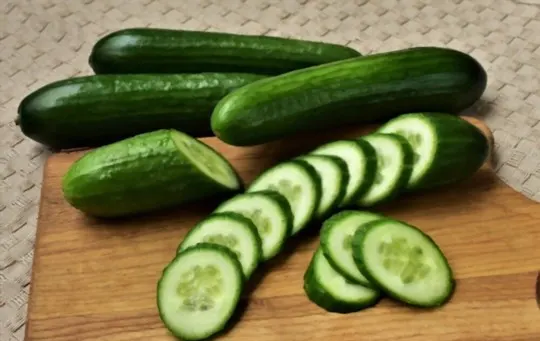
They are packed with nutrients and add moisture to any dish they’re in.
Here are some interesting facts about cucumbers:
- They are considered a fruit technically as they contain seeds.
- Cucumbers originated in India over 10,000 years ago.
- 95% of a cucumber is water, making it an excellent hydrating food.
- The skin and seeds of cucumbers are rich in antioxidants and fiber.
- You can eat the entire cucumber, including the skin and seeds.
- They grow from vines and need lots of space to spread out.
It’s fascinating to know that cucumbers have been around for millennia and carry significant health benefits.
Eating them regularly can help keep you hydrated and provide vital antioxidants too.
Overall, this article highlights that cucumbers contain seeds, making them technically fruits but used in culinary applications like vegetables.
Their impressive nutritional profile adds more reason why you should grab one next time you head to the grocery store.
3 – Bell Peppers
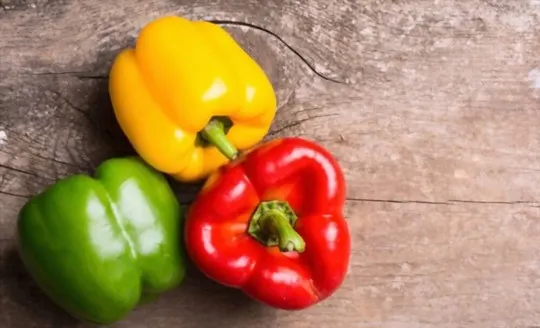
These come in varied colors such as red, green, yellow and even purple depending on the maturity of the fruit.
They belong to the nightshade family and have a sweet taste when fully ripened.
Bell Peppers are known for their high nutritional value and are an excellent source of vitamin C.
- One of the unique features of bell peppers is their versatile use in cooking. Whether they’re eaten raw or cooked, bell peppers can be used in a variety of dishes including salads, stir-fries, stews, soups and more.
- The seeds of bell peppers are also edible and offer a crunchy texture similar to that of sunflower seeds or nuts. They can be used as garnish for dishes or snacked on their own.
- Bell peppers are rich in antioxidants which help reduce inflammation and prevent chronic diseases. They also contain potassium which helps regulate blood pressure levels.
Interestingly, while it’s true that bell peppers have seeds, they are actually considered fruits from a botanical perspective.
Beyond bell peppers, other vegetables that contain seeds include tomatoes, cucumbers, eggplants and zucchinis among others.
4 – Zucchini
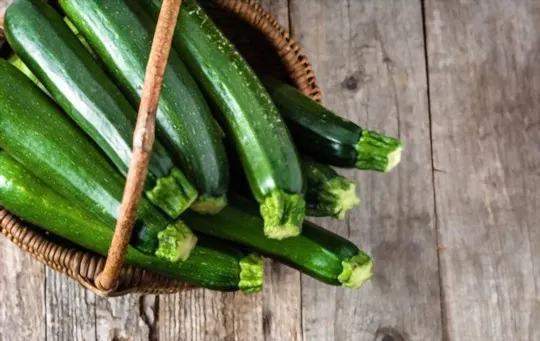
This green cylindrical fruit has seeds that can be cooked or sprouted, adding to its nutritional value.
- Zucchini seeds are edible and used in various cuisines.
- They are a good source of protein, fiber, and minerals.
- The seeds can be eaten raw or roasted and added to salads or smoothies.
- Zucchini seeds can also be sprouted for a healthy snack or garnish.
- It is important to note that some people may have an allergic reaction to zucchini seeds.
Zucchini’s seed is not only beneficial but can also add texture and flavor when used creatively in different meals.
Whether you prefer it raw or roasted, its nutty taste and benefits cannot be ignored.
5 – Eggplant
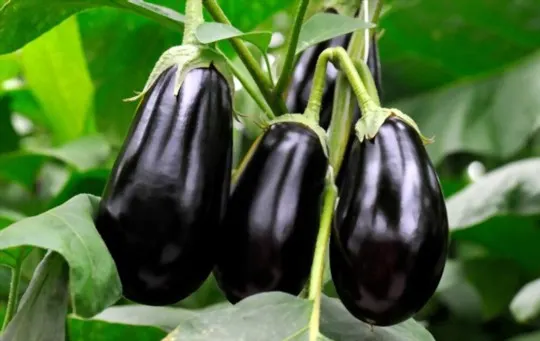
One such vegetable that has seeds is Eggplant.
These seeds are edible and can be used in various recipes.
Eggplant is a member of the nightshade family, which also includes tomatoes, potatoes, and peppers.
The seeds of eggplant are small and have a nutty flavor.
They can be roasted or fried and used as toppings for salads or soups.
Apart from Eggplants, several other vegetables have seeds too, including cucumbers, zucchini, squash, pumpkins, peppers, tomatoes, and okra.
These seeds have various nutritional benefits and can be used in cooking to add flavors to dishes.
It is essential to consume vegetables with seeds as they provide necessary nutrients like vitamins, minerals, and fibers required for maintaining good health.
Always remember to carefully wash the vegetables before consuming them to avoid any harmful bacteria.
6 – Squash
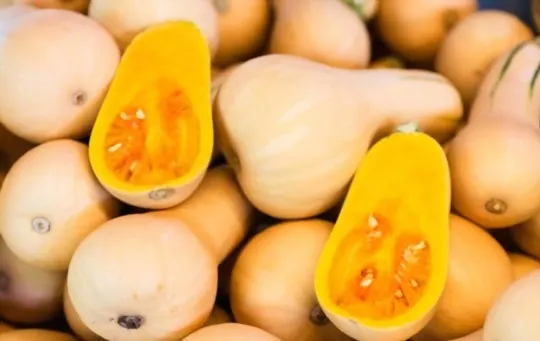
Squash, a type of vegetable with a variety of species, also comes under this category.
Here are some crucial points to know about squash and its seeds:
- Squash belongs to the cucurbitaceae family and is native to North America.
- It has many varieties, including butternut, acorn, spaghetti, and pumpkin.
- Most of the squash types are consumed as vegetables.
- Squash seeds are edible and have several health benefits such as reducing inflammation, improving heart health, and regulating blood sugar levels.
Apart from these points shared above, it is important to note that squash plants need enough space for the vines to spread out.
They also need ample sunlight and fertile soil.
With proper care and attention, squash plants can grow into healthy vegetables that provide us with nutritious seeds.
7 – Pumpkin

Consumed worldwide, these seeds are perfect for snacking or added to dishes for texture and flavor.
They provide an excellent source of magnesium, potassium, and zinc which maintain optimal health levels.
Pumpkins seeds contain antioxidants that protect the body from disease-causing agents.
They also provide heart benefits as they balance cholesterol levels.
The next heading delves into another commonly known vegetable loaded with seeds.
8 – Peas
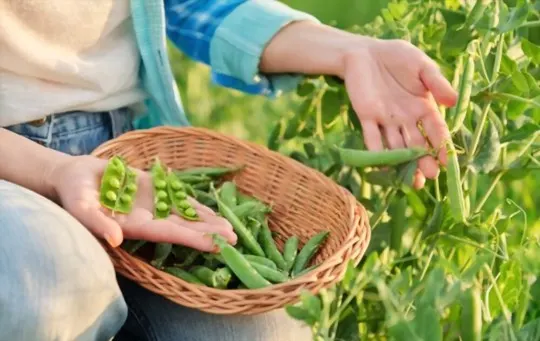
Peas, a member of the legume family, are one such example of vegetables with seeds.
Here are six essential points to know about peas:
- Peas grow in pods and come in various shapes and sizes.
- They are typically consumed cooked or raw.
- Peas contain notable amounts of protein and fiber.
- Their sweet taste makes them versatile for use in savory dishes, salads, soups, and stews.
- Frozen peas retain almost all their nutritional value compared to fresh ones.
- Lastly, even their shells can be consumed safely and provide an excellent source of dietary fiber.
9 – Corn
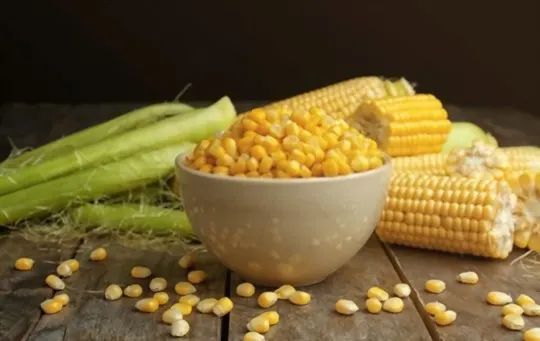
Corn is one such vegetable that is commonly grown and consumed globally.
Here are four key points about corn:
- Corn is an annual plant belonging to the grass family Poaceae.
- It’s native to Mexico and was domesticated around 9,000 years ago.
- The kernels on the cob are the seeds of corn plants.
- Corn can be used in various culinary preparations like popcorn, breakfast cereals and tortillas.
Corn also has some unique subtypes like sweetcorn, flint maize and dent corn which have different uses and characteristics.
Nutritional Benefits of Vegetable Seeds
Vegetable seeds are a great source of nutrition that should not be overlooked.
In fact, they are an excellent source of vitamins, minerals, and fiber with unique health benefits.
- They contain healthy fats.
- They are rich in protein.
- They provide essential minerals such as magnesium, calcium, and potassium.
- They also offer antioxidants that may help reduce inflammation in the body.
Adding vegetable seeds to your diet can boost overall nutrition and support good health.
However, it is important to remember that some seeds may have higher calorie content and may need to be eaten in moderation.
How to Save and Grow Vegetable Seeds?
To ensure a fruitful harvest, one needs to learn about the techniques of saving and growing vegetable seeds.
Here’s a guide on how you can improve your gardening skills.
- Extracting Seeds: Harvest vegetables when they are fully ripe with the seed heads beginning to change color. Cut the stalks off just under the seed head and air dry them indoors for approximately two weeks until completely dried. Then, shake the seeds out into a container.
- Storing Seeds: Store extracted seeds in labeled paper bags in a cool and dry place. Seed purity can be maintained by keeping multiple varieties separated.
- Testing Germination Rate: Before planting, it’s important to test your saved seed’s germination rate such that it’s easier to determine the optimal time to plant seeds.
- Planting: Temperature and soil type play essential roles in planting different vegetable types like beans, peas or radishes amongst others. Avoid over-planting and spacing pods or plants evenly.
As you gain more experience, knowledge between different vegetable seeds grows understanding of geographical requirements necessary for each vegetable type will help better handle extensive growing operations without significant diminishing returns over time.
Conclusion
Vegetables bearing seeds offer a wide range of possibilities in cooking and gardening.
Examples of seed-bearing vegetables include tomatoes, peppers, cucumbers, zucchini, squash, eggplant, peas, beans, corn and okra.
These vegetables come in different colors and sizes and are used in various cuisines worldwide.
Not only can they improve our diet and cuisine varieties but also contribute to environmental sustainability by producing more food resources.
Therefore, knowing what vegetables have seeds is not only practical but also essential for natural growth advocates.

Andrew Gray is a seasoned food writer and blogger with a wealth of experience in the restaurant and catering industries. With a passion for all things delicious, Andrew has honed his culinary expertise through his work as a personal chef and caterer.
His love for food led him to venture into food writing, where he has contributed to various online publications, sharing his knowledge and insights on the culinary world. As the proud owner of AmericasRestaurant.com, Andrew covers a wide range of topics, including recipes, restaurant reviews, product recommendations, and culinary tips.
Through his website, he aims to inspire and educate fellow food enthusiasts, offering a comprehensive resource for all things food-related.

Leave a comment